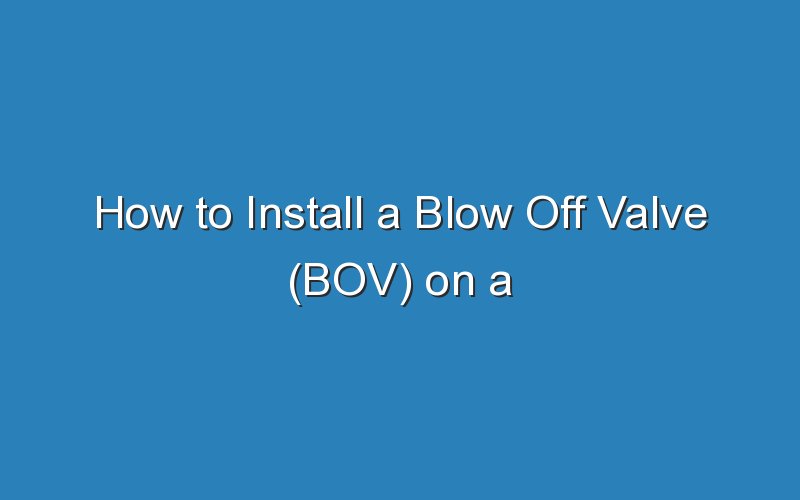Adding a blow off valve (BOV) to your car can help it run more efficiently and increase the engine’s life. The BOV is easy to install and can improve your car’s performance. You’ll need to remove the battery to install it. These devices are designed to add performance, and you can even use them on automatics. However, you should be aware that installing a BOV on a non-turbo car will not increase its power output.
A blow off valve is a critical part of turbocharged vehicles. Without one, they’ll experience a compressor surge that will compromise their performance and reliability. In addition to reducing the amount of fuel your car burns, a reliable BOV will also add a more pleasing sound. It will increase the speed of the turboshaft, and it will remove the extra pressure on the clamps and wheels from the turbo compressor wheel. This can greatly improve the car’s performance and reduce engine wear.
In addition to enhancing the sound of your car, a BOV will also improve the performance of turbocharged engines. When a turbocharged engine runs without a blow off valve, the compressor surge can affect the vehicle’s reliability and performance. Having a BOV in place will remove unwanted gasses, give the car a pleasing sound, and increase the speed of the turboshaft. It will also help remove extra pressure from the clamps, thereby restoring the lost performance.
The first step to installing a BOV is to ensure that the valve is fitted properly. Several factors must be considered before installing a BOV on a non-turbo car. If the car does not have a blow off valve, it’s a good idea to check the valve. If it’s loose, the engine will stall, causing a compressor surge. A BOV will also improve the performance.
Choosing the right BOV is a crucial part of boosting your car’s performance. A high-quality blow-off valve will make the engine run more efficiently and produce a pleasing sound. An aftermarket blow-off valve will be sprung tighter than the original OEM one, so be careful when making a purchase. When you buy a higher-quality BOV, you’ll get more bang for your buck.
Most aftermarket blow-off valves are adjustable and have a tight spring. Tightening the valve will increase engine speed and reduce the risk of a compressor surge. This happens when the turbo blade stalls against the high intake air, which increases the compressor surge. This will result in poor performance. A well-made BOV will make your car sound more reassuring and a satisfying sound.
A well-made blow-off valve will make your car sound great, and it will be more efficient than an ordinary intercooler. It will make your car run more smoothly and efficiently. And it will not be as loud. It will sound cool. If you’re looking for a silent blow-off valve, then the recirculating type is for you. These types of turbos don’t make noise but they are quiet and will not impact performance.
Aftermarket blow-off valves are a popular choice for cars that don’t have turbos. This type of device can be installed to a non-turbo car. Its sound will be muffled by the air in your car, so you may not be able to hear the sound. In stock turbo systems, a blow-off valve is not needed. The engine will run at a maximum efficiency when the turbo is properly re-installed.
In addition to the cost of installing a BOV, the installation process is fairly simple. There are a few steps involved. The first is to make sure you have enough room for the blow-off valve. The next step is to find the correct location. Aside from the exhaust system, you should also check for the exhaust system and other parts. If your car has an exhaust valve, it is important to ensure the outlet is vented properly. If you want to install a blow-off valve, you’ll need a vent pipe.

